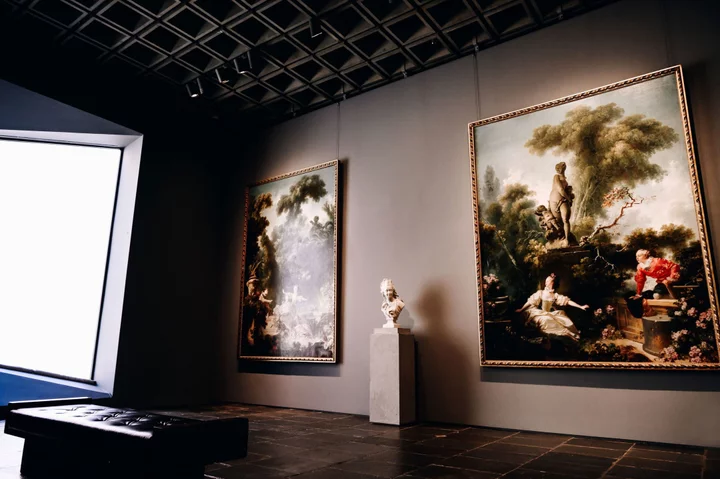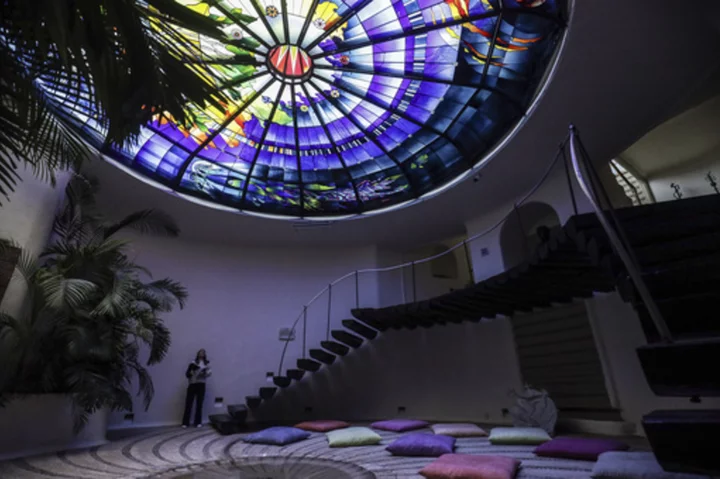A New York City landmark has a new owner.
The onetime home of the Whitney Museum of American Art on Madison Avenue, designed by architect Marcel Breuer, will be purchased by Sotheby’s auction house. The price was not disclosed, though people familiar with the deal said it was in the region of $100 million.
“It’s basically a win-win for everybody,” says Adam Weinberg, the museum’s outgoing director, in an interview. “It helps secure the future of the Whitney, it gives Sotheby’s a really great place, and the building can still be used for art in the way that Breuer intended. We actually all feel really good about it.”
For Sotheby’s Chief Executive Officer Charles Stewart, the deal represents what he says is “a once in a lifetime, unmissable opportunity.” Owning an internationally recognized landmark, he continues, “is a game changer for us. New York is the global center of the art world, and our global headquarters are here, so we should be in a space that’s commensurate with that status.”
The Brutalist structure on the Upper East Side, completed in 1966, exemplified a style that the art historian Barry Bergdoll termed a “heavy lightness.”
The building was vacated by the Whitney when it moved to its current location in the Meatpacking District in 2015. After that, the space was used by the Metropolitan Museum of Art, which occupied it between 2016 and 2020 at a reported annual cost of $18 million. (The actual fees the Whitney received were somewhere in the region of $3 million to $4 million a year, Weinberg says.) Facing financial difficulties, the Met then transferred the remaining years of its lease to the Frick Collection, which moved the bulk of its works to the building in 2021 while its own historic mansion was renovated and expanded.
Read more: Tour the Frick Collection's New Madison Avenue Museum Location in NYC
Fielding Offers
Through all of this, the Whitney still owned the space, raising the specter of what it would do once the Frick’s renovation was complete. “The Frick extended its sub-lease to August 2024, so we knew we had time,” says Weinberg. “But word had gotten out on the street that the Frick would be leaving, and so we started fielding people for several years.”
He says that a range of potential buyers showed early interest, “from private collections of art, private collections of American vernacular, to some interest in single artist museums—it’s been kind of fascinating.” But many of these buyers, Weinberg continues, quickly balked. “People don’t understand how expensive it is to run a museum,” he explains. “They don’t understand that the initial expense of buying the building is the least expensive part: it’s the operations of it, and it’s frankly why in part they decided not to continue.”
Weinberg declines to say specifically who approached the Whitney. There was some speculation in the art world that a commercial megagallery such as Gagosian would move into the building; others suggested that it would be used for a combination of retail and exhibitions.
Sotheby’s Takes the Prize
In a sense, the latter prediction has come true.
Sotheby’s, which currently occupies a nearly 500,000-square-foot building on the far east side of Manhattan on York Avenue, and recently acquired a roughly 250,000-square-foot office building in Long Island City, Queens, says that it will use the Breuer building for exhibition space (galleries will be free and open to the public, according to a release), along with what Sotheby’s says is a “reimagined signature auction room.”
“Our intention is to preserve the iconic interior elements and parts of the experience we all know and love about the Whitney,” says Stewart.
The building confers a heightened level of visibility for the auction house, he continues. “You could show a picture of this building to anybody and they’d recognize it,” he says, “and the location couldn’t be more perfect.”
“We’re going to move in sometime two years from now, so we’ve got time,” Stewart adds, “and frankly a lot of options with a lot of the more detailed planning that happens between now and then.” He says he “believes” that there will still be a cafe in the basement of the building.
As to whether or not the building’s soaring fourth floor galleries will be used as an auction salesroom, he says, “it may be—we don’t have that plan yet.” Sotheby’s plans to keep its York Avenue building.
For Weinberg, the sale is a triumphant bookend to a multidecade career at the Whitney, but it’s also, he says, “a little bittersweet.” The bottom line, he continues, is “the building is being preserved.”









